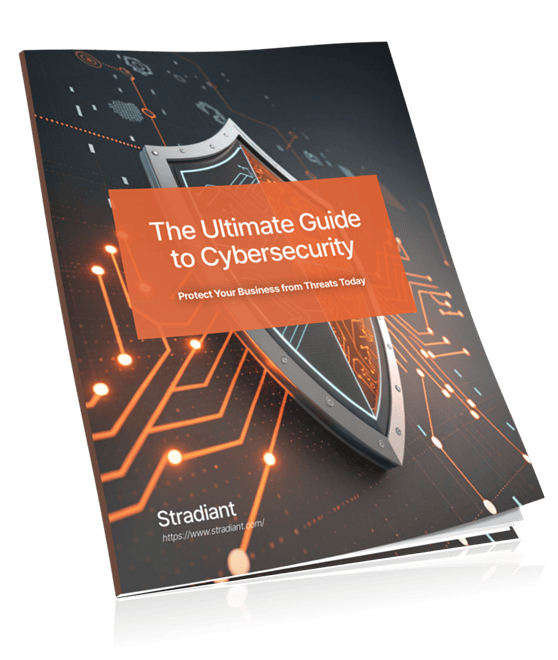Government organizations face significant challenges in cybersecurity, jeopardizing public data, operations, and national security. The stakes are high; inadequate protection can erode public trust. Key challenges include:
- Increasing cyber threats from malicious state actors
- Vulnerabilities arising from outdated technology and inadequate employee training
- Budget constraints leading to understaffing and insufficient resources
Securing public data is critical for maintaining national security. Managed solutions offer a promising approach. By partnering with trusted IT service providers, government offices can enhance their cybersecurity measures through:
- Continuous monitoring of network security
- Implementing advanced technologies like AI-enabled analytics
- Developing comprehensive data governance policies
These strategies not only strengthen defenses against emerging threats but also ensure that government agencies can focus on their core missions while protecting sensitive information effectively.
Understanding Cybersecurity Risks for Government Offices
Government offices face numerous cyber threats that exploit various weaknesses. Recognizing these weaknesses is essential to safeguarding public data. Key vulnerabilities include:
- Outdated Systems: Many government organizations still rely on old technology, which often lacks the latest security updates, making them easy targets for cybercriminals.
- Unsecured IoT Devices: The growing use of Internet of Things (IoT) devices increases the attack surface for hackers. Many of these devices do not have sufficient security measures, leaving sensitive information exposed.
Inadequate employee security training compounds these risks. Employees may inadvertently fall prey to phishing attacks or fail to recognize suspicious activities due to a lack of awareness. This creates opportunities for insider threats, where individuals with access misuse their privileges, intentionally or unintentionally compromising data integrity.
Recognizing these weaknesses and addressing employee training gaps is crucial for government offices aiming to enhance their cybersecurity posture. With the right strategies in place, agencies can significantly reduce their susceptibility to emerging cyber threats while protecting public trust and national security.
Modernizing Cybersecurity Infrastructure with Cloud Solutions
The shift towards digital transformation is essential for government agencies aiming to strengthen their cybersecurity defenses. Traditional infrastructure often struggles against evolving cyber threats. Adopting modern solutions, particularly cloud-based platforms, can significantly improve data security.
Here are some of the key benefits of using cloud data platforms:
- Scalability: Cloud platforms offer scalable compute and storage resources that adapt to an agency’s needs. This flexibility allows for quick responses to changing demands.
- Security Standards: Snowflake exceeds relevant cybersecurity standards, providing robust encryption and compliance features that align with government regulations.
- Centralized Data Management: A unified cloud data platform simplifies data management, reducing the risks associated with disparate systems and improving operational efficiency.
Using AI-Enabled Security Analytics for Threat Detection and Response
AI-enabled security analytics are a crucial tool in improving cybersecurity for government offices. By using artificial intelligence, agencies can greatly enhance their ability to detect and respond to threats. Here are some key benefits:
- Real-Time Monitoring: AI algorithms constantly analyze large amounts of data, looking for unusual activities that may indicate a security breach.
- Predictive Analysis: Machine learning models can identify patterns from past attacks, helping organizations anticipate potential threats before they happen.
- Automated Responses: System alerts trigger immediate actions, reducing the time taken to neutralize threats and minimizing damage.
Government offices are increasingly targeted by malicious actors; therefore, integrating AI technology into cybersecurity frameworks is essential. With advanced analytics, agencies can take proactive measures against cyber threats, ensuring public data remains secure and maintaining public trust in governmental operations.
Implementing Comprehensive Data Security Safeguards Beyond Technology Solutions
Securing public data requires a multifaceted approach that extends beyond mere technological solutions. Key components of this strategy include:
1. Data Governance Policies
Establishing robust data governance frameworks ensures proper management of sensitive information. This involves defining roles, responsibilities, and protocols for data handling, which helps mitigate risks associated with unauthorized access and misuse.
2. Dynamic Threat Intelligence Mechanisms
Implementing threat intelligence allows government offices to stay ahead of emerging cyber threats. By continuously gathering and analyzing data about potential risks, organizations can proactively adjust their security measures to protect against evolving attack vectors.
3. Effective Backup Strategies
Regular and reliable backup policies are essential for data recovery in case of breaches or system failures. Utilizing automated backup solutions ensures that critical information remains safe and accessible, minimizing downtime and operational disruptions.
Combining these elements creates a holistic security posture that not only protects against external threats but also strengthens internal protocols. The integration of thorough governance, proactive threat intelligence, and solid backup practices enhances the overall resilience of government agencies in safeguarding public data.
Features to Look for in Managed IT Service Providers for Government Entities
When evaluating managed IT service providers, government agencies should prioritize several critical features that enhance cybersecurity and operational efficiency. These features include:
- 24/7 Monitoring: Continuous surveillance of network activities is essential. This ensures immediate detection and response to any security threats, minimizing potential damage.
- Predictable Budgets: Fixed monthly costs allow government offices to manage finances effectively without unexpected expenses. This predictability aids in long-term planning and resource allocation.
- Compliance Expertise: Providers should demonstrate knowledge of regulations like HIPAA, ensuring that data protection standards are met consistently.
- Robust Backup Solutions: Regular backups protect against data loss, especially in the event of ransomware attacks or system failures.
- Scalability: A flexible infrastructure can adapt to evolving needs and mission requirements, allowing agencies to expand services without significant investments.
Enhancing Operational Efficiency Through Managed Solutions While Ensuring Compliance with Regulations
Transitioning to managed IT services offers significant benefits for government agencies. This shift not only optimizes resources but also positively impacts the technology lifespan. Here are key advantages:
- Resource Optimization: Managed services provide cost efficiencies through streamlined operations, allowing government entities to allocate budgets more effectively.
- Extended Technology Lifespan: Regular maintenance and updates from managed service providers help sustain and extend the functional life of critical systems.
Compliance with regulations such as HIPAA is non-negotiable in safeguarding public data. Government offices must establish best practices tailored towards compliance, which include:
- Regular Audits: Conducting audits ensures that data protection measures align with legal standards.
- Employee Training Programs: Educating staff on compliance requirements fosters a culture of security awareness.
- Dynamic Policy Updates: Adapting policies in response to evolving regulations ensures continued adherence.
By integrating managed IT services, government agencies can improve security and efficiency in their operations while maintaining compliance.
Prioritizing Cybersecurity as a Critical Component of Government Operations with Managed Services
Government agencies must act quickly to make cybersecurity a top priority. The growing threats to public data and national security make this absolutely necessary. Here are some key strategies they can use:
- Leveraging Modern Technologies: Use cloud platforms and AI analytics to improve data protection.
- Partnering with Managed Service Providers: Work together with trusted providers who specialize in cybersecurity solutions for government.
By taking proactive measures, government agencies can significantly strengthen their defenses against cyber threats. Implementing effective strategies for protecting data not only keeps sensitive information safe but also maintains the trust of the public.
It’s important for organizations to review their current cybersecurity practices. Investing in advanced solutions is crucial for staying compliant with regulations like GDPR and HIPAA while also ensuring smooth operations. Showing a commitment to cybersecurity demonstrates a dedication to safeguarding public interests and resources.
Frequently Asked Questions About Managed IT
What are the main cybersecurity challenges faced by government organizations?
Government organizations face numerous cybersecurity challenges including outdated legacy systems, vulnerabilities in unsecured IoT devices, and insider threats. These issues can compromise public data security, which is critical for national security and maintaining public trust.
How can managed IT services enhance cybersecurity for government offices?
Managed IT services play a crucial role in enhancing cybersecurity for government offices by providing expert support, continuous monitoring, and proactive threat management. Outsourcing IT management helps improve network security measures against specific threats like ransomware and supply chain attacks.
Why is modernizing cybersecurity infrastructure important for government agencies?
Modernizing cybersecurity infrastructure is vital for government agencies as it allows them to adopt advanced solutions, such as cloud-based platforms like Snowflake. These modern tools enhance data security by providing scalable storage solutions and improved data governance capabilities.
How does AI technology contribute to threat detection in government cybersecurity?
AI-enabled security analytics significantly improve threat detection capabilities for government offices. By utilizing AI technology, agencies can analyze vast amounts of data quickly, enabling faster response times to potential cyber threats and enhancing overall public data security.
What comprehensive safeguards should government entities implement beyond technology solutions?
Government entities should implement robust data governance policies, dynamic threat intelligence mechanisms, and effective backup strategies as part of a holistic approach to securing public data. These safeguards ensure that even if a breach occurs, the impact on sensitive information is minimized.
What key features should government offices look for in managed IT service providers?
When selecting managed IT service providers, government offices should prioritize features such as 24/7 monitoring, predictable budgeting, and continuous support capabilities. These features are essential for maintaining high levels of security and operational efficiency while ensuring compliance with regulations.

